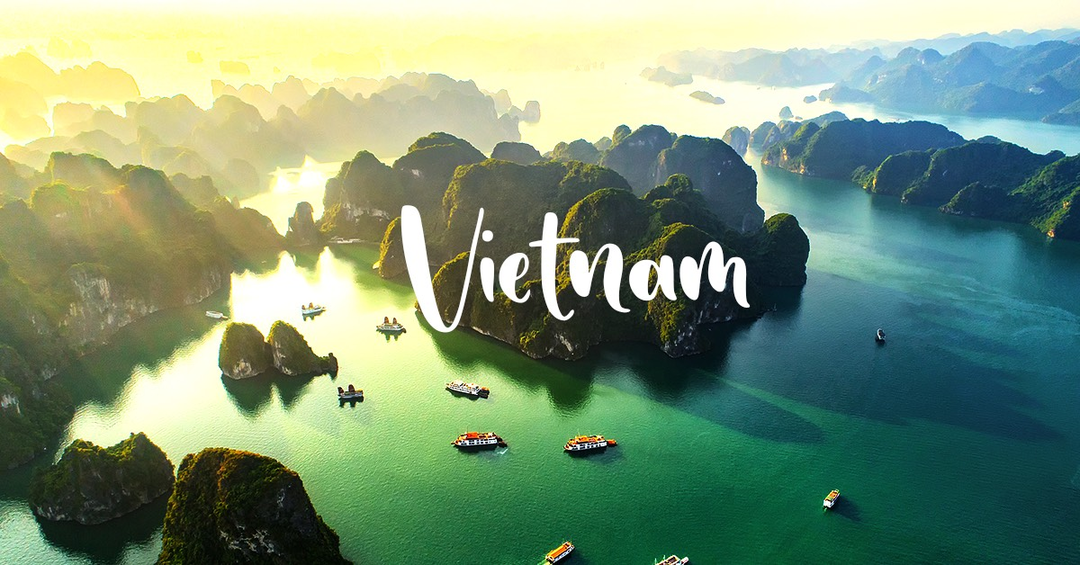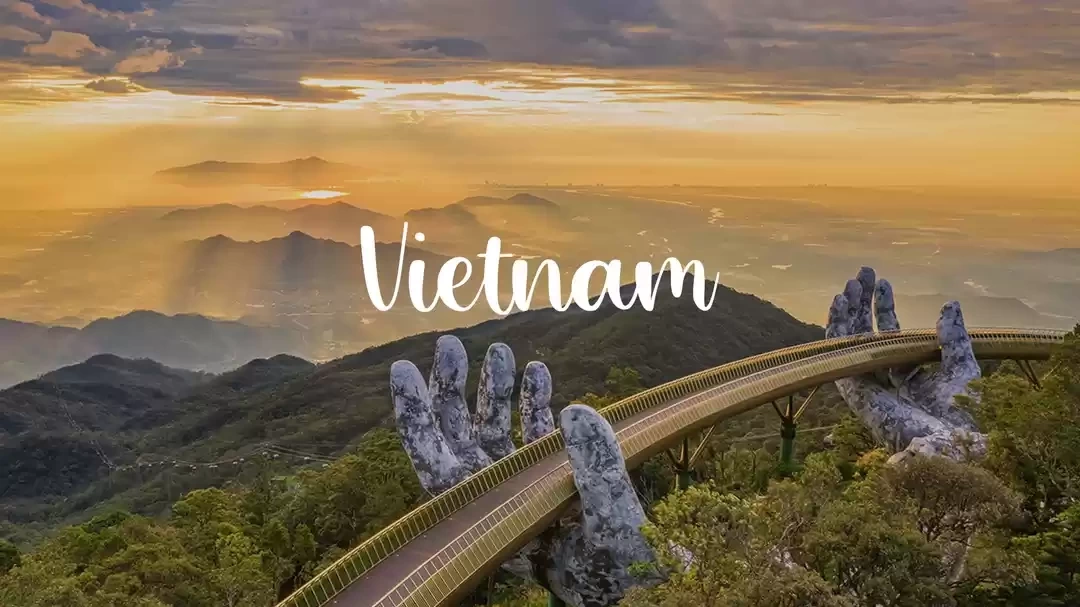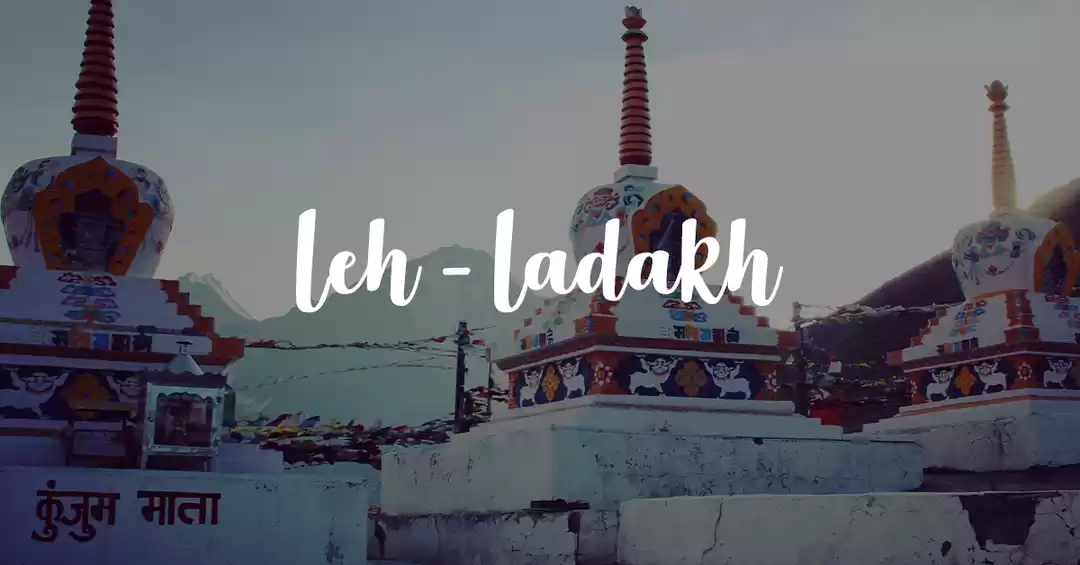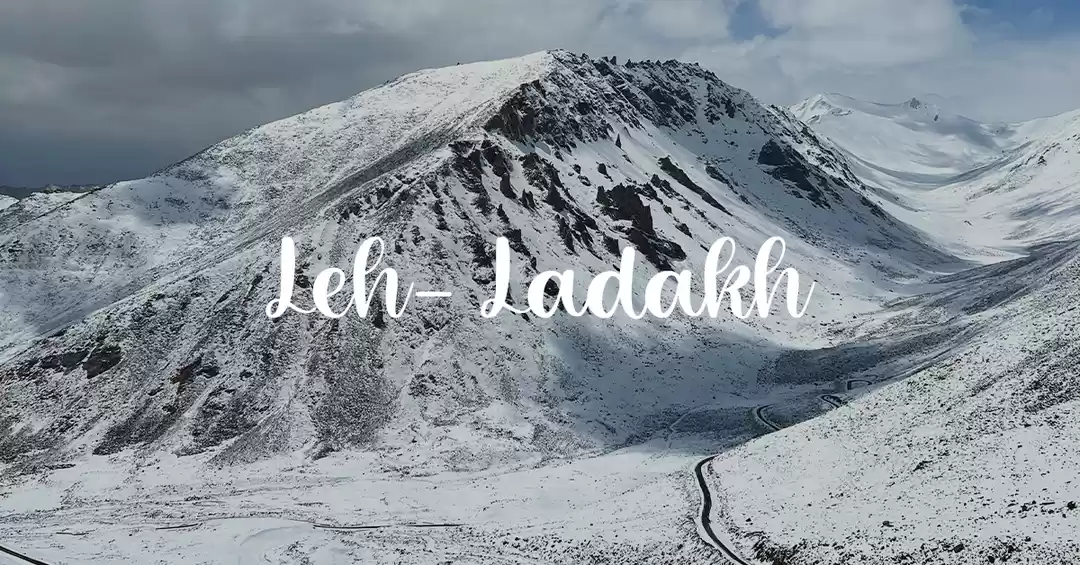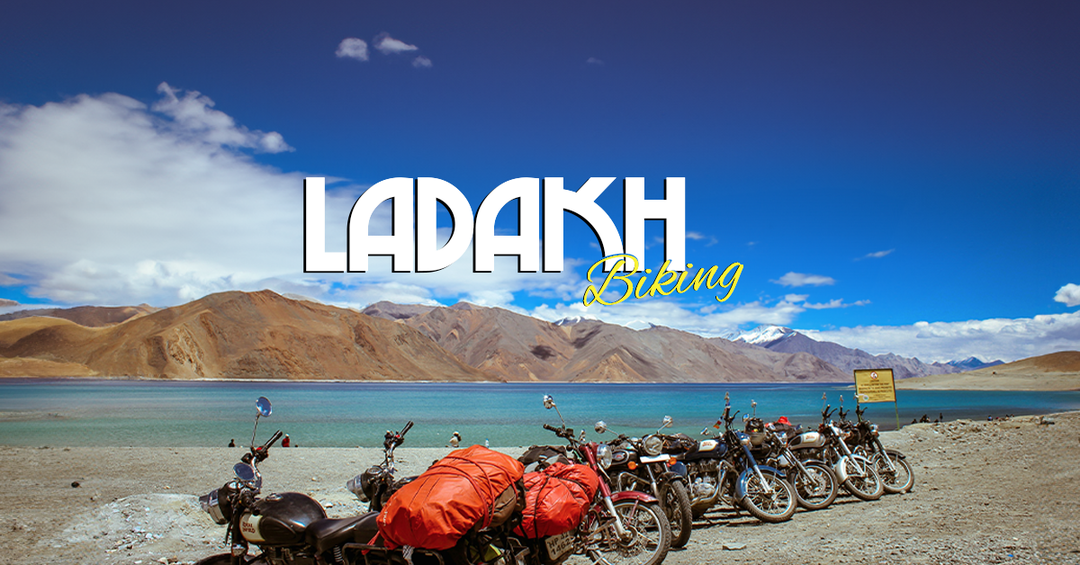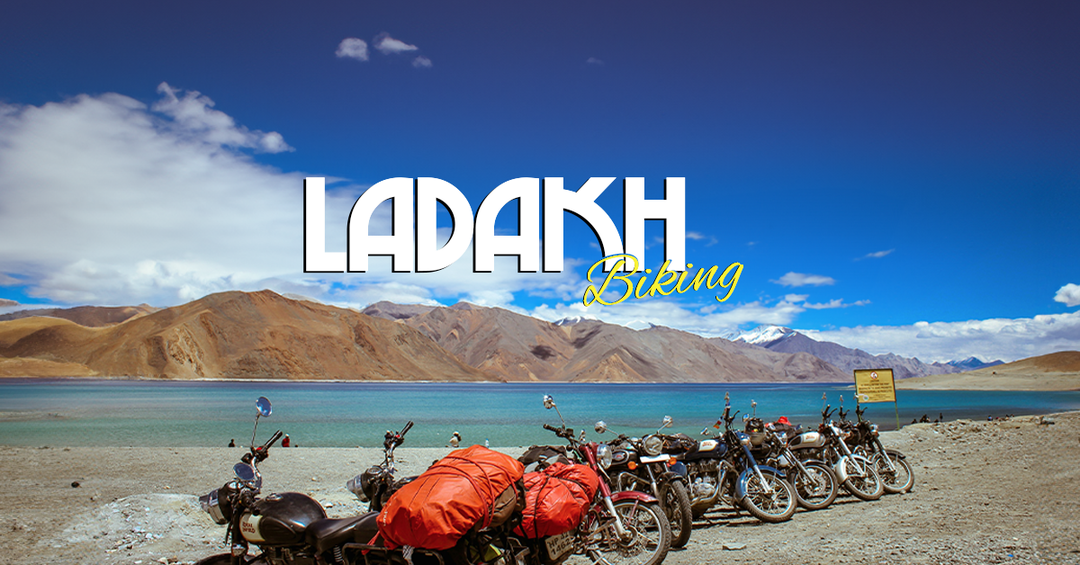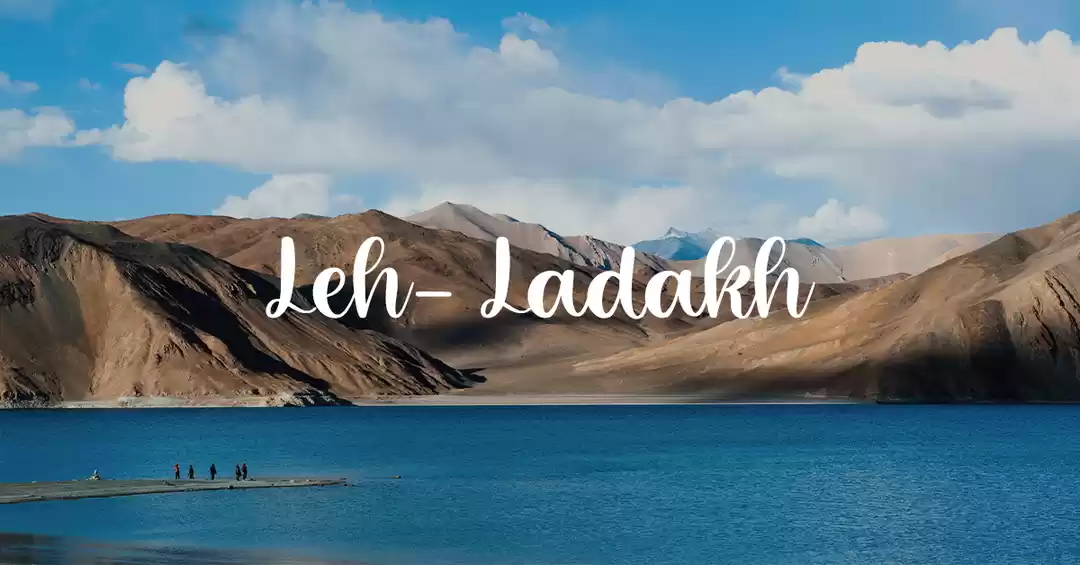
What makes Khardung La different from any other high motorable pass in the world? The answer is a lot of things. The stunning views of the surrounding mountain ranges including Karakoram range is a heavenly encounter in itself. Motorbike riders from all around the world visit Khardung La, who seek the thrill of driving or riding through one of the highest roads globally.
Often referred to as the Pass of Lower Castle, this pass stands as a marvel of human engineering and nature’s grandeur. Nestled in the Ladakh region of the Indian Himalayas, this high-altitude mountain pass connects Leh with the Nubra and Shyok Valleys. At an elevation of approximately 18,380 feet (5,602 meters), Khardung La holds the distinction of being one of the highest motorable roads in India as well as the world.
It's not just about the roads, rather Khardung La is an emotion encompassing several factors including its distinctive landscape with sand dunes, riverine belts, and Bactrian camels, offering travelers diverse scenic beauty and cultural experiences.
Let's know more about Khardung La in this article and also bow our heads down to this creation of nature in admiration.
History behind the name Khardung La
- The name "Khardung La" has an interesting history behind it. The word La means pass in Tibetan. The local pronunciation of the name is more like Khardong La or Khardzong La.
- The word "Kharzong" means "castle". However, it's unclear how the combination of these words was used to name this mountain pass.
- Khardung La was historically part of the major caravan route from Leh to Kashgar in Central Asia. About 10,000 horses and camels used to take this route annually. A small population of Bactrian camels can still be seen at Hunder, in the area north of the pass.
Khardung La Village: A Ladakhi Life in the Himalayas
Nestled high in the Himalayas, Khardung La village sits like a timeless sentinel overlooking the vast, rugged expanses of Ladakh. Located in the Indian state of Jammu and Kashmir, just below the world-renowned Khardung La pass, this village is a hidden gem.
Life in Khardung La village depicts a simple, slow moving life like most other mountain villages. You can see men and women all well clad in traditional woolen attire, getting ready to step out to tend to their yaks and goats, their primary sources of livelihood. The fields, though sparse and rugged, are carefully cultivated with barley and potatoes, crops that defy the altitude's harsh demands.
Children, with rosy cheeks flushed by the cold, make their way to the local schools, their laughter echoing through the valley. Education here is a bridge to a world beyond the mountains, yet it is deeply rooted in the cultural and spiritual teachings of their ancestors.
Despite its isolation, Khardung La village is not untouched by the modern world. Solar panels glint on rooftops, providing a sustainable source of energy. Occasionally, travelers and adventurers find their way to this remote haven, drawn by the allure of the Khardung La pass and the promise of experiencing life at one of the highest inhabited places on Earth.
How To Plan Your Next Trip to Leh Ladakh? Still confused? Know it with Tripoto
How is Silk Route & Khardung La related?
Khardung La Pass and the Silk Route are intricately connected through their shared history of facilitating trade and cultural exchange between the Indian subcontinent and Central Asia from a long time.
The Silk Route, also known as the Silk Road, was a network of trade routes that connected China, India, Persia, and the Mediterranean. It was named after the lucrative trade in silk that was carried out along its length, but it also saw the exchange of spices, precious metals, textiles, and other valuable commodities.
Khardung La was a vital part of the caravan trails used by traders traveling between Leh in Ladakh and Central Asian cities like Yarkand and Kashgar. This route was particularly significant for the transport of wool, pashmina shawls, and other goods from India to Central Asia and beyond. The pass facilitated the movement of traders, pilgrims, and even armies, making it a crucial artery in the vast network of the Silk Route.
Popular festivals in Khardung Village
Nestled in the heart of the Ladakh region, Khardung Village is not only a gateway to the famed Khardung La Pass but also a vibrant hub of cultural festivities. Here are the most popular festivals celebrated in Khardung Village, each offering a unique glimpse into the rich cultural tapestry of Ladakh.
1. Losar Festival: Welcoming the Tibetan New Year
When: December or January
Losar, the Tibetan New Year, is the most significant festival in Khardung Village.
It marks the end of the harvest season and the beginning of a new year according to the Tibetan lunar calendar. The entire village transforms into a carnival of joy and devotion.
2. Hemis Festival: Celebrating Guru Padmasambhava
When: June or July
Dedicated to Guru Padmasambhava, the Hemis Festival is a grand celebration held at the Hemis Monastery, one of the largest and wealthiest monasteries in Ladakh.

Monks perform sacred mask dances (cham) that depict the life and deeds of Guru Padmasambhava. Though the main event takes place at the monastery, the spirit of the festival resonates throughout Khardung Village. Know more about the Hemis Festival from Tripoto travelers.
3. Dosmoche Festival: Warding Off Evil Spirits
When: February
Dosmoche, known as the "Festival of the Scapegoat," is a unique Ladakhi festival aimed at driving away evil spirits and ensuring the well-being of the community.

A symbolic effigy representing evil spirits is paraded through the village and later burned or discarded, symbolizing the purification of the community. It is celebrated with great fervor in Khardung Village.
4. Ladakh Harvest Festival: A Bounty of Celebrations
When: September
The Ladakh Harvest Festival is a time of gratitude and celebration, marking the end of the agricultural season.Villagers dress in their finest traditional attire and perform lively folk dances to the beats of drums and the melodies of flutes.
Archery, a traditional sport in Ladakh, is a major attraction during the festival, with villagers showcasing their skills in friendly competitions.
5. Stok Guru Tsechu: Celebrating the Oracles
When: February or March
Stok Guru Tsechu is a unique festival that celebrates the oracles of Ladakh. It is held in the nearby Stok village but is equally significant to the people of Khardung Village, who participate in and witness the mystical events.
Selected monks and laypersons undergo rigorous spiritual training to become oracles, believed to be possessed by deities during the festival. They perform incredible feats and offer prophecies and blessings to the villagers.
Here is the best 8 Day Ladakh Itinerary from Tripoto
Best Places to Visit in Khardung La
Nubra Valley
Nubra Valley, often referred to as the Valley of Flowers, is a stunning region that juxtaposes lush greenery with stark desert landscapes. A visit here is incomplete without experiencing the famous Hunder Sand Dunes, where visitors can ride the unique double-humped Bactrian camels, reminiscent of the region's ancient trade routes.
Turtuk Village, near the India-Pakistan border, is a hidden gem known for its picturesque beauty and rich Balti culture, making it a must-visit for those exploring Nubra Valley.
Diskit Monastery
Diskit Monastery is the oldest and largest monastery in the Nubra Valley. Founded in the 14th century, it houses a 32-meter statue of Maitreya Buddha that overlooks the Shyok River.
The monastery's ancient murals, frescoes, and Tibetan Buddhist scriptures offer a deep dive into the region's spiritual heritage. The panoramic views from the monastery, especially at sunrise and sunset, are nothing short of spectacular.
Shanti Stupa
As the first rays of the sun illuminate the stupa, it radiates a sense of serenity and spiritual upliftment among any traveler who visits this place.
Shanti Stupa is a symbol of peace and harmony and is perched on a hilltop in Leh, offering panoramic views of the city and the surrounding mountains. Built by Japanese monks to promote world peace, this white-domed stupa is a blend of traditional Buddhist architecture and modern elements.
Thiksey Monastery

Thiksey Monastery, often referred to as the ‘Mini Potala,’ is an architectural marvel that mirrors the Potala Palace of Lhasa. Located 19 kilometers from Leh, this 12-story complex houses a stunning 15-meter high statue of Maitreya Buddha, covering two floors of the monastery. The monastery is still an active center of learning and houses a large community of monks. The annual Gustor Festival, featuring sacred Cham dances, adds to its cultural vibrancy.
Leh
Leh, the historic capital of Ladakh, serves as the gateway to Khardung La and offers a vibrant mix of adventure, spirituality, and history.

The majestic Leh Palace, a 17th-century structure, provides panoramic views of the town and the surrounding Stok Kangri range. The nearby Thiksey Monastery, with its impressive architecture and spiritual ambiance, is one of Ladakh’s largest and most beautiful monasteries, making Leh an essential stop for travelers seeking to delve into the region’s rich cultural tapestry.
Hemis Monastery
Hemis Monastery, one of Ladakh’s wealthiest and largest monasteries, is renowned for its annual Hemis Festival, which celebrates Guru Padmasambhava.
This grand celebration is marked by the Cham dance, where monks don vibrant masks and costumes to perform ritualistic dances that narrate the life and deeds of the revered guru. The monastery's museum has a vast collection of ancient relics, thangkas, and artifacts, giving an insight into Ladakh's spiritual and cultural heritage.
Siachen Base Camp
For adventure enthusiasts, a visit to the Siachen Base Camp offers a rare glimpse into the life of soldiers stationed at the world’s highest battlefield.
Situated amidst breathtaking glaciers and snow-clad peaks, the base camp provides an opportunity to understand the extreme conditions and challenges faced by the Indian soldiers. Visitors can marvel at the stunning views and experience the patriotism and resilience that permeate the air.
Pangong Lake
Pangong Lake, though not directly in Khardung La, is a must-visit destination on any Ladakh itinerary, renowned for its stunning blue waters that change hues with the sky. The scenic drive from Leh to Pangong Lake, passing through the high-altitude Chang La Pass, is an adventure in itself.

Upon arrival, the lake's surreal beauty will captivate your soul. An overnight stay in tented camps by the lake, under a sky full of stars, adds to the magical experience, making Pangong Lake an essential visit for nature lovers.
Sumur Village
Located in the Nubra Valley, Sumur Village is known for its tranquility and the serene Samstanling Monastery. The monastery showcases vibrant murals and is a spiritual haven for visitors seeking solace.
Sumur’s lush greenery and picturesque landscapes make it ideal for leisurely nature walks, where travelers can soak in the scenic beauty and enjoy the crisp, clean air. You can also interact with friendly locals and learn about their traditional way of life, making it a culturally enriching experience.
Tso Moriri Lake
Tso Moriri Lake, a bit off the beaten path, offers spectacular high-altitude scenery that is truly unparalleled.
Known for its pristine blue waters surrounded by snow-capped mountains, the lake is a haven for bird watchers, with rare migratory birds frequenting the Tso Moriri Wetland Conservation Reserve. The ancient Korzok Monastery on the lake's banks adds another spiritual dimension to the visit.
Read more about 25 Best Places to Visit in Ladakh
Best Times to Visit Khardung La
The ideal time to visit Khardung La is from May to September. During these months, the pass is accessible, and the weather is relatively pleasant, making it perfect for adventure and sightseeing.
Spring blossoms in Ladakh from May to June, and the snow begins to melt, revealing the majestic beauty of the region. The roads are generally clear, and the weather is cool, making it an excellent time for bikers and trekkers.
July to August are the warmest months, with temperatures ranging between 10°C to 20°C during the day. This period is also the peak tourist season, so you can expect more fellow travelers on the roads.
How to Reach Khardung La?
Khardung La, a mesmerizing high-altitude pass nestled in the Ladakh region, stands as a beacon for adventurous souls and thrill-seekers. Reaching this lofty destination is a journey filled with awe-inspiring landscapes and memorable experiences.
By Air:
Nearest Airport: The closest airport to Khardung La is the Kushok Bakula Rimpochee Airport in Leh, located about 40 kilometers away. This airport connects Leh to major Indian cities like Delhi, Mumbai, and Srinagar, making it the most convenient option for air travelers.
From Leh to Khardung La: Once you land in Leh, you can hire a taxi or rent a bike for the journey. The drive from Leh to Khardung La is an adventure in itself, taking you through winding roads that offer breathtaking views of the snow-capped peaks and serene valleys. It's recommended to acclimatize in Leh for a couple of days before heading to the high-altitude pass.
By Train:
Nearest Railway Station: The nearest railway station to Khardung La is Jammu Tawi, approximately 700 kilometers away. While Jammu Tawi is well-connected to major cities across India, the journey from there to Leh involves a long road trip.
From Jammu Tawi to Leh: You can hire a taxi or take a bus from Jammu to Leh. The route passes through some of the most scenic landscapes, including the mesmerizing Srinagar-Leh highway, known for its rugged beauty and challenging terrain. Once in Leh, the journey to Khardung La can be continued by road.
By Bus:
Bus Services: Several bus services operate from major cities like Delhi, Manali, and Srinagar to Leh. The Himachal Road Transport Corporation (HRTC) and Jammu and Kashmir State Road Transport Corporation (JKSRTC) provide regular bus services to Leh.
From Leh to Khardung La: From Leh, you can take a local bus to Nubra Valley, which passes through Khardung La. However, there is no 100% guarantee of bus availability on all days.
Once in a lifetime, visit and explore Khardung La and experience the real beauty of Ladakh in your own way!
Do not forget to share your experiences with Tripoto in form of articles, photoblogs and comments. Let us make travelling fun and adventurous with Tripoto!





